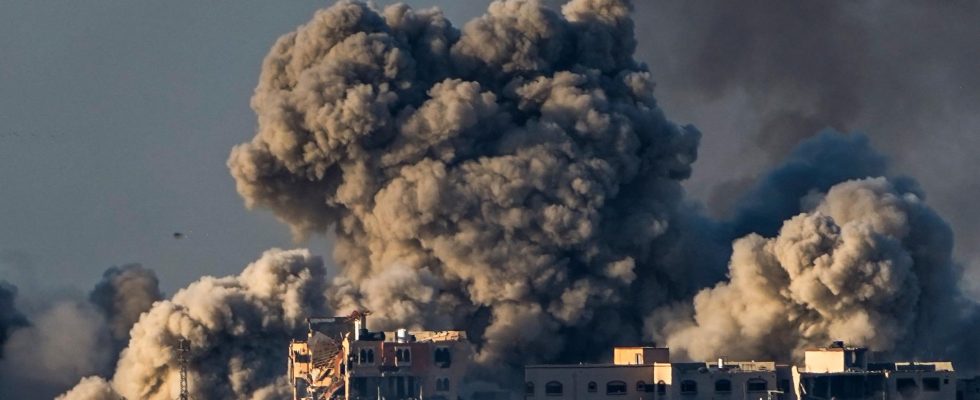unsaveSave
expand-left
fullscreen Smoke rises from the southern Gaza Strip after an Israeli bombardment in mid-December. Photo: Ariel Schalit/AP/TT
Thousands of people have been killed and entire neighborhoods razed to the ground.
But the war in Gaza also causes major environmental damage and extensive emissions of carbon dioxide.
Alongside death and devastation, there is growing concern about the impact of the Gaza war on climate and the environment.
Since the war began in October, when Israel responded to the terror-labeled Hamas attack, air pollution has increased, the water has become dirty and, in addition to people, wildlife in the Palestinian area is suffering.
The mountains of garbage are growing because a large part of the population has been forced to crowd into a small area, and the possibilities to take care of waste are limited. In addition, sewage is leaking because infrastructure has been knocked out.
Gaza could become an environmental disaster, Jagan Chapagain, head of the International Federation of Red Cross and Red Crescent Societies (IFRC), has warned.
Large climate footprint
The war also has a large impact on the climate. In the first 60 days, carbon dioxide emissions exceeded the annual emissions of 20 countries and territories identified as highly vulnerable to climate change, according to a study.
Until December 4, 281,000 tons of carbon dioxide were released in the wake of the war. It is equivalent to the burning of 150,000 tons of coal, according to the study, which has not been reviewed according to a so-called peer review. The authors, based in the United States and Great Britain, emphasize that the calculations are on the low side because not all acts of war are included. Other greenhouse gases, such as methane, are also not included. Therefore, a limited “snapshot” of the climate footprint rather than a complete conclusion is given, according to the authors who call for more studies.
The lion’s share of emissions are attributed to Israel’s air and ground operations in Gaza and come from aircraft, combat vehicles, and the manufacture and firing of munitions. Almost half of the estimated emissions are accounted for by US aircraft delivering equipment to Israel.
Hamas’ rockets against Israel are estimated to have generated around 713 tons of carbon dioxide, which corresponds to the burning of 300 tons of coal. But limited transparency makes the emissions difficult to calculate.
Greater focus
The environmental impact and climate footprint of military activities is receiving more and more attention in the world. Demands are growing for emissions to be reported better – and reduced – so as not to remain a blind spot in global climate work.
– The atmosphere does not care whether the emissions come from someone defending themselves, making ice cream or running a hospital, says Patrick Bigger, from the think tank Climate and Community in the US and co-author of the study, to The Jerusalem Post.
– If we are to be able to handle the climate crisis, we must understand the sources of the emissions better.
